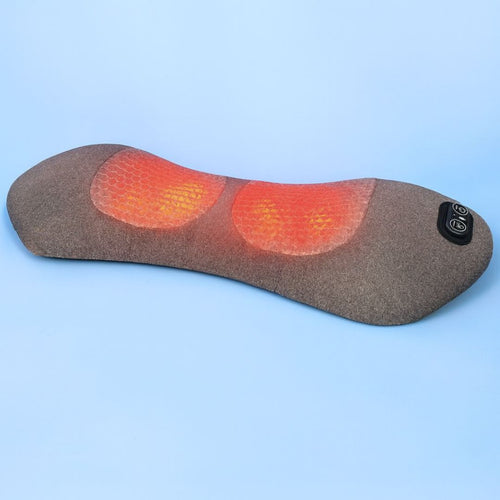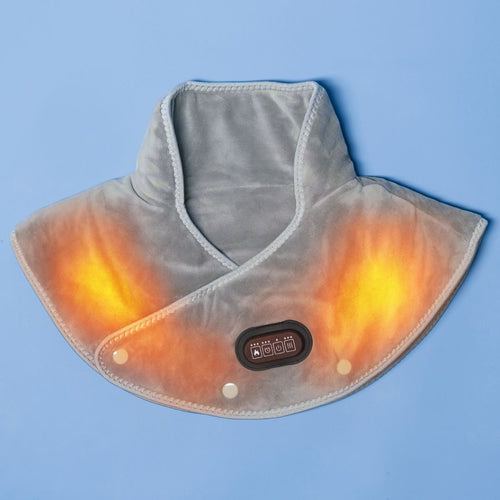Experts’ Top Tips on How to Fix Poor Neck Posture
By Holly Grace Callis | Published on August 11th, 2025

You catch yourself crunching your neck to walk hands-free on your phone or hunching over your laptop. It may feel harmless at the time, but poor neck posture adds up. Over weeks or months, it can lead to tightness, chronic pain, and even nerve pressure.
The good news is that posture can be retrained. By making small daily changes and using the right tools, you can support your neck and help it return to its natural position. The process takes consistency, not perfection.
In this guide, we share expert-recommended ways to fix poor neck posture. You'll learn what causes it, how to address it at home, and what tools can help support your alignment as you heal.
What Causes Poor Neck Posture in the First Place?

Neck posture issues don’t happen overnight. They usually come from repeated habits, weak muscles, or a poor sleep setup. These small problems build over time and start to affect how your neck holds your head throughout the day.
Forward Head Position (Tech Neck)
Spending long hours on screens often causes your head to move forward, away from its natural alignment with your shoulders. This is sometimes called "tech neck."
When the head moves forward even a few inches, it adds extra weight to your cervical spine. Research from the Surgical Technology International journal shows that forward head posture can create up to 60 pounds of pressure on the neck, depending on the angle. This constant load strains muscles, discs, and joints in your upper spine.
Weak Upper Back and Deep Neck Muscles
Your neck depends on nearby muscles to keep your head aligned. When the deep neck flexors and upper back muscles are weak, the neck has to work harder. Over time, this can lead to muscle fatigue, joint stress, and ongoing discomfort.
Many people unknowingly overuse surface muscles like the upper traps while underusing the stabilizers that sit deep near the spine. This muscle imbalance pulls the head forward and makes it harder to stay upright without effort.
Poor Sleep Setup
Your sleeping position plays a major role in neck alignment. Using a pillow that is too flat, too high, or not supportive enough can cause your neck to tilt in the wrong direction for hours at a time.
Sleeping on your stomach can also strain the neck, forcing it into rotation and making it harder to recover overnight. A cervical support pillow helps keep the neck in a neutral position while you sleep, which can ease morning pain and improve alignment during the day.
Experts’ Top Tips on How to Fix Poor Neck Posture
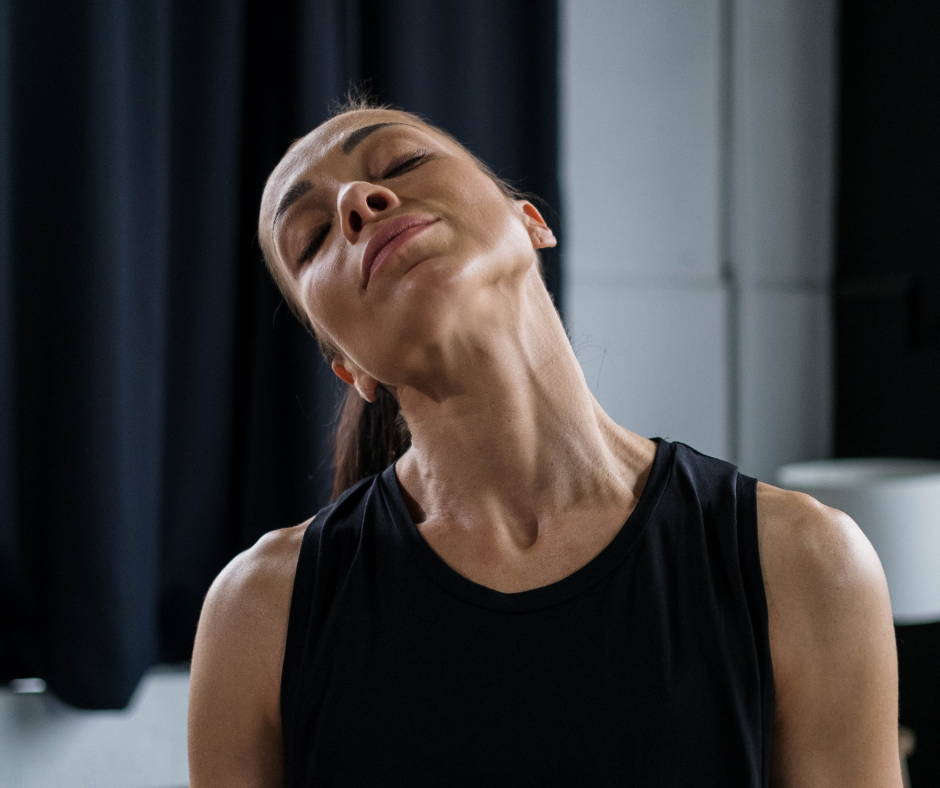
Physical therapists and posture specialists agree: fixing poor neck posture starts with daily action. That means building strength where your neck needs support, stretching what feels tight, and using alignment tools that keep your body in the right position without adding strain.
These tips are based on evidence-backed techniques used in clinical settings and recommended for people dealing with forward head posture or chronic neck tension.
1. Strengthen Your Deep Neck Flexors
Your deep neck flexors are small muscles at the front of your neck. They help hold your head in place and keep it from falling forward. When these muscles are weak, larger muscles take over, leading to tension and poor posture.
Try chin tucks against a wall or on the floor. Keep your gaze level and slowly pull your head back until it feels like your neck is long and your spine is straight. Hold the position for a few seconds, then release. Repeat this daily to build endurance and control in the muscles that matter most for neck alignment.
2. Improve Posture Awareness
The first step to fixing posture is noticing it. Many people let their heads drift forward throughout the day without realizing it. This happens when working at a desk, looking at a phone, or even standing in line.
A simple way to check your alignment is to see if your ears are lined up over your shoulders. Keep your chin level, pull your head back slightly, and open your chest.
Set phone reminders or use a posture tracking app to build awareness. With practice, these small checks become habits that support long-term change.
3. Stretch Tight Muscles Daily
Tight muscles in the neck and shoulders pull your head forward. Stretching them every day can help restore balance and improve how your neck feels. Focus on areas like the upper traps, chest, and the levator scapulae. That is the muscle that connects your neck to your shoulder blade.
Try doorway stretches to open the chest, and slow neck rolls to release tension. These stretches work best after movement or light heat, when muscles are warm and more flexible.
4. Use a Cervical Support Pillow at Night
A good night’s sleep can support better neck posture, especially if your pillow helps your spine stay in a natural position. Regular pillows often collapse or force your neck into a bend that creates tension while you sleep.
A cervical support pillow, like the Thera Pillow, is shaped to match the curve of your neck. It helps reduce pressure on the joints and muscles by keeping your head and neck in line with your spine.
This can ease morning pain and make it easier to hold better posture during the day.
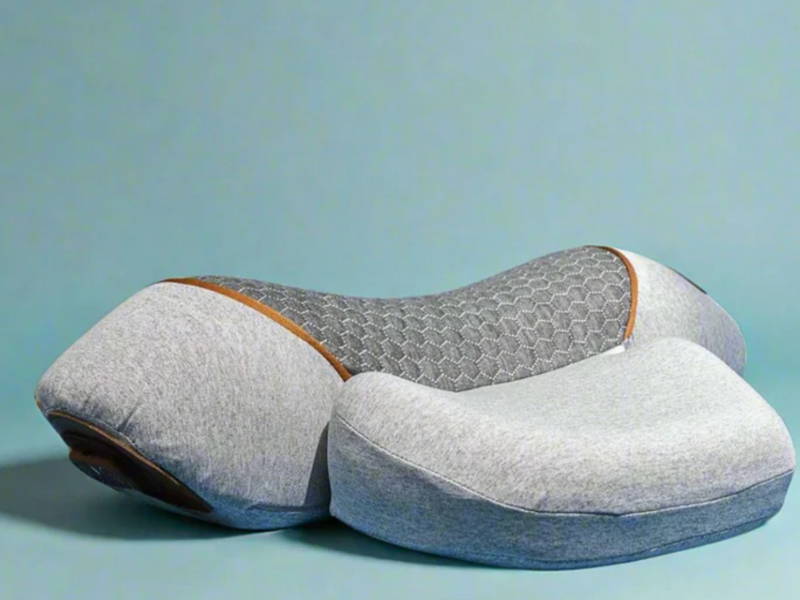
5. Add a Posture Aid During the Day
Posture support tools can help you hold better alignment without forcing your muscles to do all the work alone. These include wearable devices or small traction tools that gently remind your body to stay upright.
Wearing a posture aid for short periods each day helps reset your posture and reduce stress on the neck. For example, the Thera Back can support your upper spine and shoulders during work, walking, or light activity.
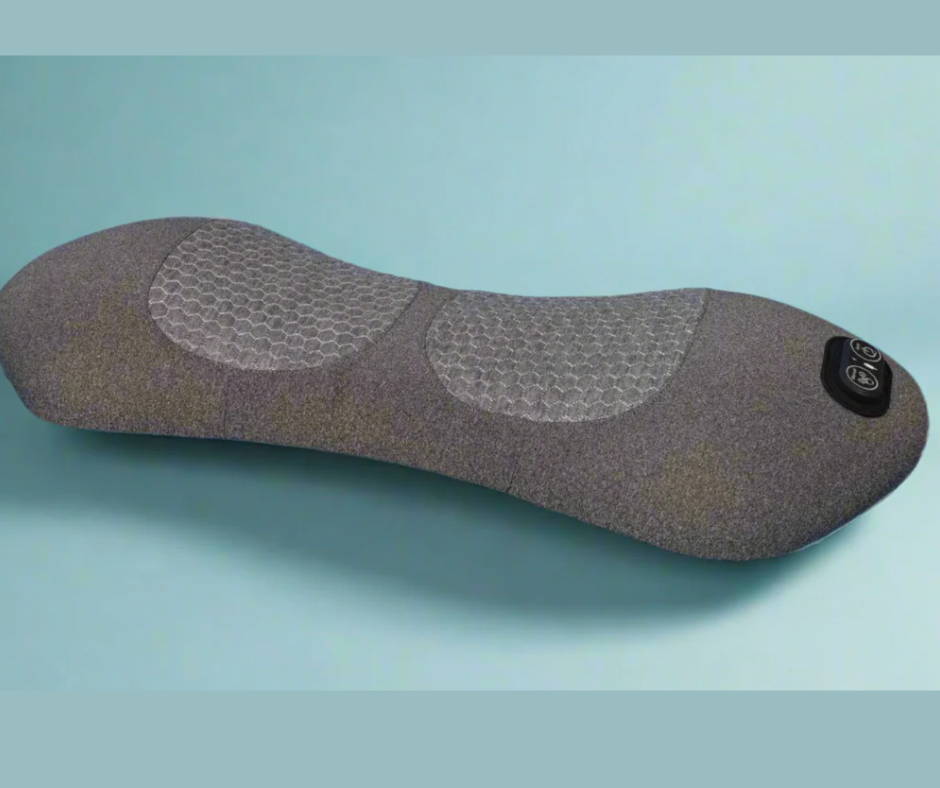
6. Take Breaks from Screens and Reset
Looking down at phones or sitting still at a computer for hours causes your neck to tense and your head to move forward. Over time, this habit makes it harder for your body to return to a natural, upright position.
Take a short break every 30 minutes. Stand up, roll your shoulders, and gently move your neck side to side. These small resets keep muscles active and prevent tightness from building up.
You can also step outside for a walk or practice a few deep breaths while standing tall. Pairing movement with calm breathing helps your body relax and improves how your neck feels over time.
How Long Does It Take to Fix Poor Neck Posture?
Most people start to feel some improvement in their neck posture within two to four weeks. The key is staying consistent. Simple changes done every day, like stretching or using posture tools, help your body learn new habits.
If your posture problem has been going on for a long time, it may take more time to fully correct. That is normal. Severe cases still respond well to the same methods, but they need more patience and stronger muscle support.
Focus on progress, not speed. Even small changes, such as holding your head up straighter while sitting, can make a noticeable difference over time.
Keep doing the work daily, and your neck will start to feel more natural in better alignment.
Your Neck Can Heal With the Right Daily Habits
Fixing poor neck posture does not require a big change all at once. It works best with small, repeated actions that train your muscles and ease tension. The more often you practice good posture, the easier it becomes.
Start with one or two habits you can do every day. That might mean stretching in the morning or checking your posture during screen time. As these steps become normal, your neck will feel stronger and less sore.
Support tools can also make a big difference. Callixie has a range of tools designed to support better neck posture.
When your body has the right support, healing becomes much easier.
FAQs About Fixing Poor Neck Posture
Can Bad Neck Posture Be Corrected?
Yes, most people can correct poor neck posture with consistent effort. The key is retraining the muscles that support the head and reducing the habits that cause misalignment in the first place. Strengthening exercises like chin tucks and daily stretches are a good starting point.
Support tools such as the Callixe Thera Pillow also play an important role. They keep your neck in a better position overnight, which helps maintain progress from daytime routines. Over time, your body starts to adopt better posture without needing to think about it as much.
Can a Nerd Neck Be Fixed?
Nerd neck, also called forward head posture, can be reversed in many cases. The condition happens when the head moves in front of the shoulders and stays there too long. This strains the neck and upper back, causing pain and stiffness.
Correcting nerd neck takes time, but it responds well to a mix of strength training, stretching, and posture awareness. Focus on deep neck flexor exercises and make small changes to your desk or phone setup. Adding a posture aid can also help you maintain better alignment throughout the day.
Does Sleeping Without a Pillow Help Forward Head Posture?
Sleeping without a pillow may seem like a fix, but it often leads to more problems. Without the right support, your neck may bend too far backward or forward while you sleep, especially if you change positions at night.
A cervical pillow keeps your spine in a neutral position and reduces stress on the neck joints. For people with forward head posture, using a shaped pillow that supports the curve of the neck is a better long-term option than sleeping without one.
How to Tell If Your Neck Is Out of Alignment?
There are a few signs that your neck may be out of alignment. You might notice that your ears sit forward of your shoulders when you look in the mirror. Other signs include frequent neck stiffness, tension headaches, or pain between the shoulder blades.
If you are not sure, a physical therapist or chiropractor can evaluate your posture and help you understand what needs to be corrected. They may also recommend specific exercises or tools to support your progress at home.


